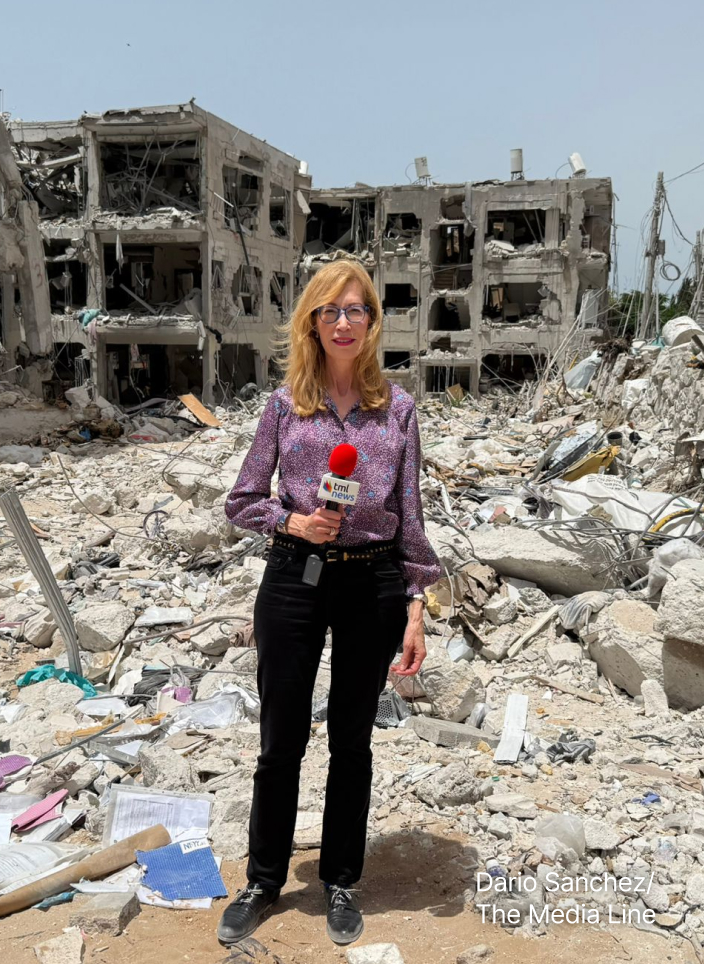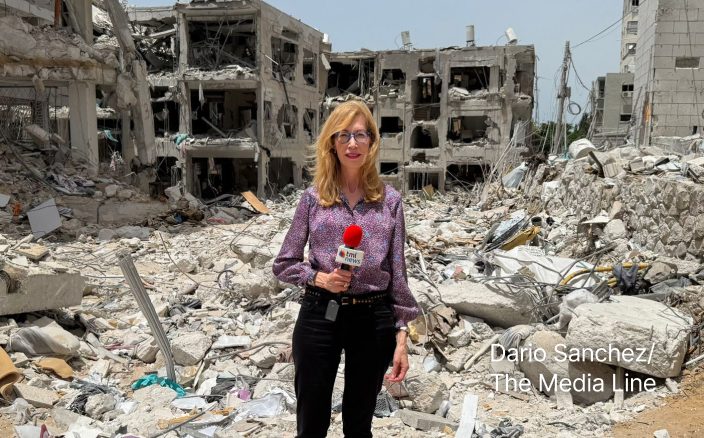A Houthi‑fired ballistic missile from Yemen slipped past Israel’s multi‑layered defense shield [1] on Sunday, exploding near Ben Gurion Airport, scattering shrapnel across the tarmac and forcing flights to divert. The IDF admitted that several interception attempts—each costing millions of dollars—failed to stop the comparatively cheap projectile, part of the cost‑asymmetry that experts say is bleeding Western coffers while leaving Iran’s Yemeni proxy largely unscathed.
That imbalance is now defining the crisis in the Red Sea, where sustained attacks from Iranian-backed terrorists are draining Western defense budgets and disrupting the arteries of global commerce. When a $20,000 missile fired by Yemen’s Houthi rebels can bring down a US Reaper drone worth over $30 million, the cost of war takes on a new, troubling shape.
Over 800 strikes have been carried out by the United States against Houthi positions since March 15, yet the barrage of drones and missiles has not ceased. As Houthi forces target American, British, and Israeli-linked ships across one of the world’s most vital maritime corridors, military and economic pressure is intensifying on the US and its allies, with no end in sight.
This is Iran flexing its muscles. It’s not only about attacking Israel—it’s about showing that Tehran can hurt the West, especially economically, without ever firing a shot directly. It’s a way of saying: if you hit us, we’ll unleash chaos through our proxies.
According to British Colonel (ret.) Richard Kemp, who commanded forces in Afghanistan and has advised on Middle East security, said Iran’s fingerprints are all over the conflict. “This is Iran flexing its muscles,” Kemp said in an exclusive interview with The Media Line. “It’s not only about attacking Israel—it’s about showing that Tehran can hurt the West, especially economically, without ever firing a shot directly.” Kemp described the Houthis as one arm of what he called the “Iranian octopus,” used to deter Western attacks on Iran by threatening both military and commercial targets. “It’s a way of saying: if you hit us, we’ll unleash chaos through our proxies,” he said. “And the Red Sea is one of the best places to do that.”
The economic disparity between offensive and defensive action in this conflict is staggering. While the Houthis fire relatively cheap projectiles—often made with imported components from Iran—intercepting them requires millions of dollars in sophisticated Western systems.
This is asymmetric warfare by design. You don’t need to inflict mass casualties. You just need to make your adversary bleed money.
Janatan Sayeh, a research analyst at the Foundation for Defense of Democracies, explained that this isn’t accidental—it’s strategic. “This is asymmetric warfare by design,” Sayeh told The Media Line. “You don’t need to inflict mass casualties. You just need to make your adversary bleed money.” Sayeh detailed how the Houthis now assemble most of their weaponry inside Yemen. “Iran no longer sends complete missiles,” he said. “They send parts—drones, guidance systems, warheads—and the Houthis put them together locally, based on instructions. This modular system makes interception harder and enables a continuous supply chain.”
That supply chain is hard to disrupt. Even if parts are intercepted at sea, once the knowledge and tooling exist inside Yemen, the system can regenerate. “Every Patriot missile or naval interceptor costs millions,” added Kemp. “Every drone they launch might cost a few thousand. This is not sustainable.”
Beyond the cost of interception, maintaining a constant military presence in the region adds to the strain. Aircraft carrier groups, drone patrols, and airstrike campaigns in Yemen are expensive undertakings, and the frequency of Houthi attacks suggests that this drain could last for years. “This is turning into a war of attrition,” said Sayeh. “But only one side is spending big.”
Give the gift of hope
We practice what we preach:
accurate, fearless journalism. But we can't do it alone.
- On the ground in Gaza, Syria, Israel, Egypt, Pakistan, and more
- Our program trained more than 100 journalists
- Calling out fake news and reporting real facts
- On the ground in Gaza, Syria, Israel, Egypt, Pakistan, and more
- Our program trained more than 100 journalists
- Calling out fake news and reporting real facts
Join us.
Support The Media Line. Save democracy.


This is turning into a war of attrition. But only one side is spending big.
A Wider Economic Fallout
While the military costs of intercepting Houthi attacks have dominated headlines, the economic disruption caused by the crisis is equally severe—and still growing. According to Noam Raydan, a senior fellow at the Washington Institute for Near East Policy, commercial transit through Bab el-Mandeb and even the Suez Canal has declined by over 50% since the Houthis began their maritime campaign in late 2023. “This is huge,” Raydan told The Media Line. “A lot of commercial ships are simply unable to sail through the Red Sea, and they’ve had to reroute around southern Africa. That adds weeks of travel and increases transportation costs significantly.”
Raydan noted that although the shipping industry has adapted in some ways—shifting routes and adjusting services—many vessels linked to American or Israeli interests still avoid the region altogether. “There are no ships sailing under the Israeli flag in those waters,” she said. “And even vessels with indirect links to Israel are steering clear.”
This disruption has not only raised global freight rates but also created opportunities for certain companies to profit from the instability. “Some firms have taken advantage of the crisis,” Raydan explained. “One Singapore-based shipping company even launched a new Red Sea service during the conflict. And large players like Maersk and CMA CGM have benefited from increased freight charges, though others, like MSC, which saw vessels attacked, have had to pull back.”
Consumers are affected even if they don’t realize it. Transportation costs are factored into everything—whether it’s gasoline or imported goods.
Raydan emphasized that the impact of these disruptions is far-reaching. “Consumers are affected even if they don’t realize it,” she said. “Transportation costs are factored into everything—whether it’s gasoline or imported goods.” She added that the effect is visible particularly in oil shipments. “Crude oil from Iraq that once passed through the Red Sea now has to take the longer route around Africa. That directly raises the price per barrel by the time it reaches European refineries.”
Despite some early warnings in late 2023, the expected dramatic inflation in consumer goods didn’t fully materialize, thanks in part to industry adaptation. However, Raydan cautioned that the risks remain volatile and unresolved. “The Houthis are still tracking ships,” she said. “Even if they aren’t attacking every target, they’ve already divided their maritime campaign into multiple phases. There’s no telling what they might do next—or for what reasons.”
She also highlighted the broader strategic stakes, especially for regional energy producers like Saudi Arabia and the UAE. “These countries are investing in massive energy infrastructure,” Raydan said. “But all of that depends on regional stability. If the Houthis are allowed to keep expanding their capabilities, they could target high-profile energy projects. They’ve done it before.”
Finally, Raydan pointed to the silent economic victim in all of this: Egypt. “The decline in Suez Canal traffic has cost them billions—at least $5 billion in lost revenue so far,” she said. “And with transit still down by around 70%, it’s a major national blow.”
The decline in Suez Canal traffic has cost them billions—at least $5 billion in lost revenue so far. And with transit still down by around 70%, it’s a major national blow.
Limited Options, Mounting Pressure
Despite the scale of the response, both Kemp and Sayeh criticized the West’s handling of the crisis. “The US response, especially under the Biden administration, was extremely weak,” Kemp argued. “They delisted the Houthis as a terrorist group early on to appease Iran. That set the tone for everything that followed.” Sayeh agreed that airstrikes alone would not stop the attacks. “This is a game of whack-a-mole,” he said. “You hit one missile site, they build another. You kill a commander, they replace him. As long as Iran is providing the material and training, this cycle continues.”
Both analysts dismissed the likelihood of deploying ground forces. “There’s no appetite in Washington or London for boots on the ground,” Kemp said. “We might see special forces operations targeting key Houthi leadership. But large-scale deployment? Unlikely.” Sayeh added that even decapitation strategies have a limited effect. “You can take out one figure, but if the infrastructure is intact, the threat persists. This is about dismantling networks, not individuals.”
While some wonder if the Houthis are being addressed in the US–Iran nuclear negotiations, Sayeh said they are not. “You can cap enrichment percentages, but how do you tell Iran to stop helping a group it doesn’t officially control?” Including them in the talks, he warned, would actually limit US and Israeli options for retaliation. “Keeping them off the table gives more operational flexibility,” he said.
If Iranian ships or personnel are proven to be supporting the Houthis, they could become legitimate targets. The precedent exists.
Still, Sayeh suggested that escalation is possible. “If Iranian ships or personnel are proven to be supporting the Houthis, they could become legitimate targets. The precedent exists.”
As long as the Houthis receive weapons, training, and political backing from Tehran, none of the experts interviewed believe the threat will disappear. “So long as the weapons are coming from Tehran,” said Sayeh, “this issue is going to persist.” Kemp echoed the same warning: “Unless we start thinking of this as a global strategy by Iran, we’ll keep losing this battle—one overpriced missile at a time.”